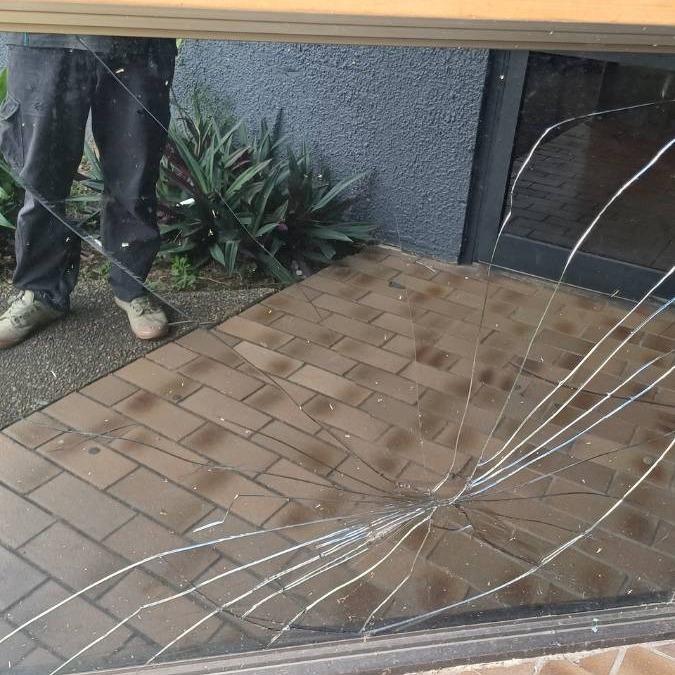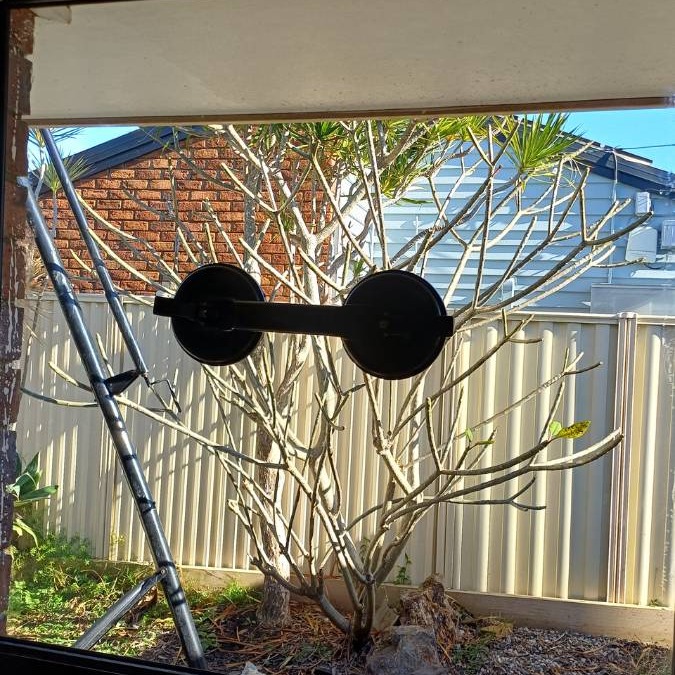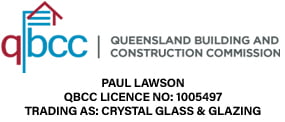Every year, Australian emergency departments treat thousands of people injured by broken glass in homes – injuries that proper safety glass could have prevented. If you’re renovating, replacing windows, or simply want to make your Brisbane home safer, understanding when safety glass is required by law isn’t just about compliance – it’s about protecting your family.
What Is Safety Glass and Why Does It Matter?
Safety glass is specifically manufactured to reduce injury risk when it breaks. Unlike regular annealed glass that shatters into large, dangerous shards, safety glass either breaks into small, relatively harmless pieces or stays together even when cracked.
Toughened Safety Glass (Tempered Glass)
Toughened glass is heated to over 600°C then rapidly cooled, creating internal stresses that make it 4-5 times stronger than regular glass. When it breaks, it crumbles into small, cube-like pieces with relatively safe edges.
Common uses in Brisbane homes:
- Shower screens and bathroom glazing: Common for wet areas due to safety and durability.
- Glass doors and sidelights: High-traffic and impact-prone areas.
- Low-level windows: Any glass below 1 metre from floor.
- Pool fencing and balustrading: Meets safety and compliance needs.
Laminated Safety Glass
Laminated glass consists of two or more glass layers bonded with a plastic interlayer (usually PVB – polyvinyl butyral). When broken, the glass stays attached to the plastic layer, preventing dangerous falls or penetration.
Brisbane applications:
- Ground floor windows in high-risk areas: Improves security and safety.
- Security glazing: For break-in protection.
- Noise reduction glazing: Useful near busy roads.
- Overhead glazing: Such as skylights.
Wired Glass (Being Phased Out)
Traditional wired glass contains wire mesh within the glass. However, new Australian Standards are phasing this out for most residential applications as it doesn’t meet current safety performance requirements.
Australian Building Code Safety Glass Requirements
The National Construction Code (NCC) and Australian Standard AS 1288 specify exactly when safety glass is mandatory in residential properties. Brisbane homes must comply with these national standards.
Mandatory Safety Glass Locations
- Glass doors and sidelights: Any glass within 300mm of a door opening requires safety glass.
- Low-level glazing: Windows with the bottom edge less than 1000mm from floor level.
- Shower and bath areas: All glass in wet areas must be safety glass.
High-Risk Area Requirements
- Pool areas: Laminated glass for fencing and glazing.
- Stairs and ramps: Glass near changes in floor level.
- Children’s areas: Extra safety requirements in childcare zones.
Size and Configuration Rules
- Single panes over 0.5m²: Must be safety glass in risk areas.
- Glass panels over 2 metres high: Have additional requirements.
- Multiple panes together: Total glazed area is considered.
Brisbane-Specific Considerations
Cyclone and Severe Weather Requirements
- Impact-resistant glazing: May be recommended for exposed properties.
- Laminated glass: Offers better weather protection than toughened glass.
- Frame and installation quality: Critical in severe weather.
Queenslander and Heritage Home Challenges
- Original glazing in sidelights: Rarely meets current standards.
- Retrofit installations: Require careful frame assessment.
- Council approvals: May be needed for heritage properties.
- Character vs safety compliance: Needs balancing during renovations.
Modern Home Large Glazed Areas
- Floor-to-ceiling windows: Require safety glass throughout.
- Sliding door systems: All panels must use safety glass.
- Open-plan designs: May increase safety glass requirements.
- Energy efficiency: Must be balanced with safety needs.
Common Safety Glass Mistakes Brisbane Homeowners Make
DIY Installation Errors
- Incorrect glass identification: Toughened glass must have proper markings.
- Inadequate frame preparation: Leads to installation failures.
- Missing compliance documentation: Required for legal proof.
Renovation Oversights
- Partial replacements: Missing sidelights when replacing doors.
- Configuration changes: Moving walls or doors can trigger new requirements.
- Building approval gaps: Missing necessary permits.
Cost-Cutting Compromises
- Choosing wrong glass type: Cheaper initially but costly later.
- Delaying upgrades: Increases future expenses.
- Ignoring professional advice: Leads to compliance issues.
How to Identify If Your Home Needs Safety Glass Upgrades
Visual Inspection Checklist
- Glass doors without markings: Look for permanent etching.
- Low windows in living areas: Measure from floor to bottom of glass.
- Shower screens without markings: Often non-compliant.
- Pool area glazing: May not meet current rules.
Documentation Review
- Building approvals: For previous renovations.
- Glazier certificates: For past installations.
- Insurance requirements: Some policies require safety glass.
- Pool safety certificates: May include glazing compliance.
Professional Assessment Benefits
- Compliance verification: Against current Australian Standards.
- Priority recommendations: For critical upgrades.
- Cost estimates: For necessary improvements.
- Timeline planning: For staged upgrades.
The Real Cost of Non-Compliance
Insurance Implications
- Claim denials: If injuries result from non-compliant glazing.
- Premium increases: For properties with deficiencies.
- Liability exposure: Even to trespassers in some cases.
Legal and Regulatory Consequences
- Building approval complications: Future projects may be delayed.
- Sale complications: Safety issues can stop transactions.
- Rental property requirements: Include glazing compliance.
Long-Term Financial Benefits
- Energy efficiency: Modern safety glass can reduce costs.
- Property value enhancement: Increases marketability.
- Reduced maintenance: Lasts longer than substandard glass.
Choosing the Right Safety Glass for Brisbane Conditions
Climate Performance Considerations
- Heat performance: Manage solar heat gain and UV exposure.
- Humidity resistance: Laminated glass must be sealed properly.
- Thermal expansion: Requires proper allowances in frames.
Lifestyle and Aesthetic Integration
- Natural light optimisation: Maintain desired brightness.
- Privacy requirements: Use glass with privacy features.
- Architectural harmony: Match home and neighbourhood style.
Performance vs Budget Balancing
- Minimum compliance vs optimal performance: Understand the difference.
- Staged implementation: Upgrade most critical areas first.
- Long-term value considerations: Factor in maintenance and savings.
Working with Professional Glaziers for Compliance
What to Expect from Professional Service
- Compliance assessment: Checks current glass against standards.
- Detailed recommendations: Including glass type and methods.
- Quality installation: Ensures performance as designed.
- Ongoing support: Warranties and maintenance advice.
Questions to Ask Your Glazier
- Australian Standard knowledge: Are you familiar with AS 1288?
- Compliance certificates: Can you provide them?
- Warranty details: What coverage is included?
- Council approvals: Do you handle these if needed?
Red Flags to Avoid
- Avoiding compliance: Creates legal and safety risks.
- Unusually low pricing: Often means cutting corners.
- No documentation provided: Missing compliance proof.
Need expert advice on safety glass requirements for your Brisbane home? Crystal Glass provides comprehensive safety glass assessments, compliance advice, and professional installation that protects your family whilst meeting all Australian Standards. Contact us for a free consultation about your home’s safety glass needs.










